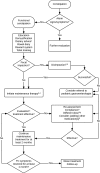Management of Functional Constipation in Children: Therapy in Practice
- PMID: 26259965
- PMCID: PMC4768242
- DOI: 10.1007/s40272-015-0142-4
Management of Functional Constipation in Children: Therapy in Practice
Abstract
Functional constipation is a common healthcare problem among children worldwide and accounts for high healthcare usage and costs. Functional constipation is a clinical diagnosis; the evaluation primarily consists of a thorough medical history and a complete physical examination. Additional investigations are not necessary in most cases. Treatment consists of non-pharmacological and pharmacological interventions. Non-pharmacological interventions involve education and demystification, toilet training (with a reward system), and a defecation diary. Pharmacological treatment comprises three steps: disimpaction, maintenance treatment, and weaning. The treatment of first choice is oral laxatives, preferably polyethylene glycol. When this is insufficient, other therapeutic agents are available. This review discusses the evaluation and management of functional constipation in the pediatric population and provides a summary of drug treatment options.
Figures

References
-
- Faleiros FT, Machado NC. Assessment of health-related quality of life in children with functional defecation disorders. J Pediatr (Rio J) 2006;82:421–425. - PubMed
MeSH terms
LinkOut - more resources
Full Text Sources
Other Literature Sources
Medical

